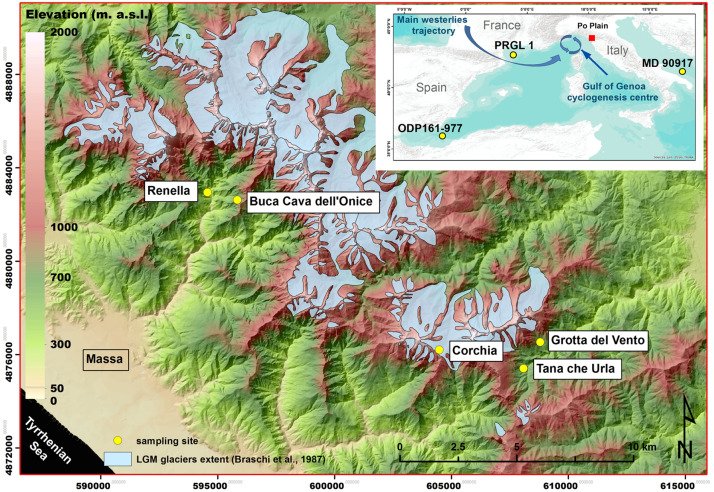Speleothem U/Th age constraints for the Last Glacial conditions in the Apuan Alps, northwestern Italy

Isola I. A. Ribolini, G. Zanchetta, M. Bini, E. Regattieri, R.N. Drysdale, J.C. Hellstrom, P. Bajo, P. Montagna, E. Pons-Branchu (2019).
Palaeogeography, Palaeoclimatology, Palaeoecology, 518, 62-71, https://doi.org/10.1016/j.palaeo.2019.01.001.
Abstract
During the Quaternary several glaciations occurred in the mountain regions around the Mediterranean and, in recent years, new ages have better constrained their timing. However, this is not the case for the Apuan Alps, a high-rainfall mountain chain adjacent to the Mediterranean Sea. Here, in spite of the widespread evidence for glaciers, the complete lack of geochronological information hinders our understanding of glaciation history. In this paper, we utilize speleothem ages to better constrain the timing of these glacial features. We re-examine 293 uranium‑thorium ages from 19 speleothems collected in five caves at different elevations. After a period of very low growth between 160 and 132 ka, the analysed speleothems grew almost continuously to ~75 ka, this period was followed by intermittent growth with lower deposition rate and presence of hiatuses until ~12.5/12 ka. This is consistent with an ice coverage persisting over the Apuan Alps, inhibiting or interrupting the growth of speleothems via the limited availability of groundwater and the scarcity/absence of soils. This interval is much greater than the time interval that has previously been attributed to the existence of glaciers on the Apuan Alps, which has been assumed to be restricted to Marine Isotope Stage (MIS) 2. Instead, ice cover probably also appeared in the Apuan Alps during MIS 4. The phase of restarting of growth, which may implies the definitive or substantial glacier melts seem to predate the Holocene.


Devi effettuare l'accesso per postare un commento.